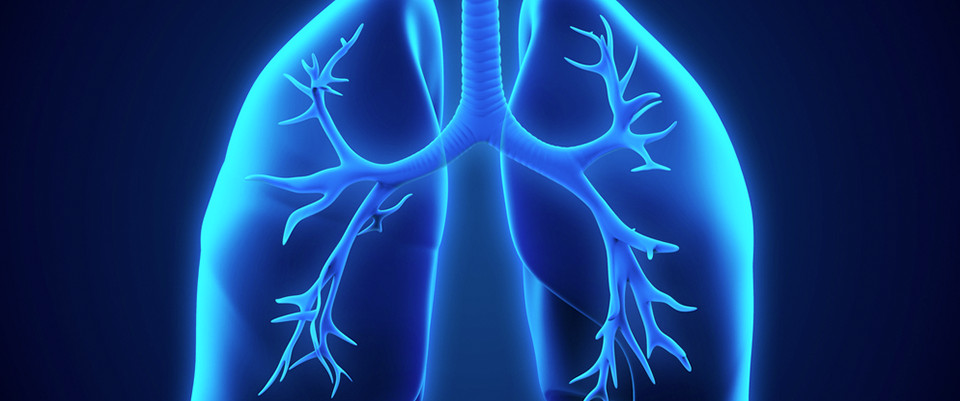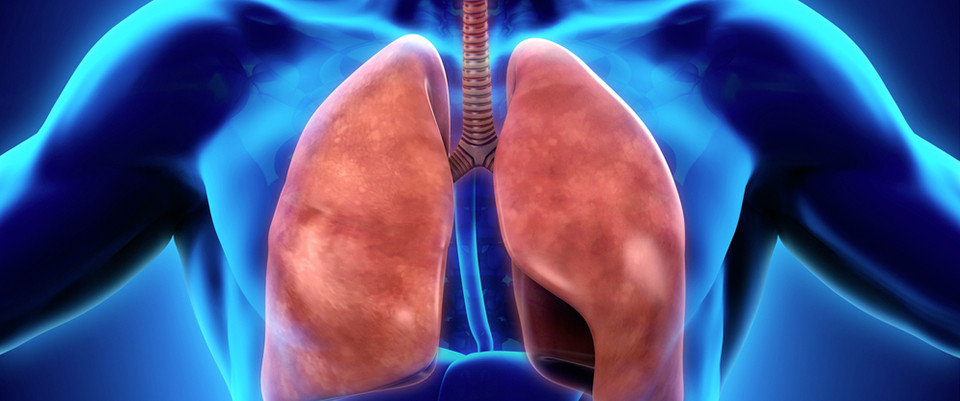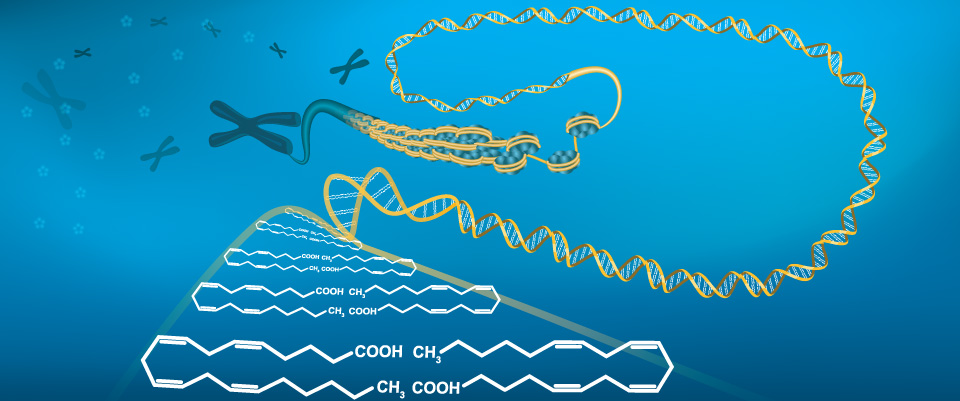PubMed
Machine learning-assisted analysis of serum metabolomics and network pharmacology reveals the effective compound from herbal formula against alcoholic liver injury
Chin Med. 2025 Apr 11;20(1):48. doi: 10.1186/s13020-025-01094-1.ABSTRACTBACKGROUND: The popularity of herbal formulas is increasing worldwide. Nevertheless, the effective compound is challenging to identify due to its intricate composition and multiple targets.METHODS: An integration machine learning-assisted approach was established, whereby the particular action mechanism and direct target were obtained through the correlation of compounds, targets, and metabolites. The association between a compound and an action pathway was selected from the shortest path of the "compound-target-pathway-disease" network, which was analyzed using the Floyd-Warshall algorithm. Subsequently, an investigation was conducted into the relationship between metabolites and action pathways, as well as targets, through the analysis of serum metabolomic profiling and the selection of metabolite biomarkers by random forest. In order to accurately identify the direct acting target as well as the most effective compound, the relationship between the compounds and their targets was investigated using a feature-based prediction model conducted by AdaBoost. The binding mode of the effective compound and the direct-acting target was verified by molecular docking, dynamics simulations, and western blotting. In this study, Baiji Wuweizi Granule (BWG) was employed to elucidate the effective compound against alcoholic liver injury (ALD).RESULTS: BWG exerted an influence on the serum metabolomic, resulting in the identification of seven potential biomarkers. Furthermore, six effective compounds and the PI3K-AKT signalling pathway were identified through a co-analysis with the shortest path from compound to ALD in the "compound-target-pathway-disease" network. It was postulated that the effective compounds would bind with key targets from the PI3K-AKT signaling pathway, as indicated by the prediction model of compound-target interaction (R2 > 0.95). The dominant bonding type for the effective compounds and key targets was hydrogen bond. These results indicated that AKT1 was the notable target for BWG, and that 2,3,4,7-tetramethoxyphenanthrene was the marker compound for BWG against ALD. The present study provides evidence that the protective effect of BWG on ALD can be mediated by the PI3K-AKT signaling pathway.CONCLUSIONS: Our findings demonstrate the value of a machine learning-assisted approach in identifying the key compound, target and pathway that underpin the efficacy of an herbal formula. This provides a foundation for future clinical and fundamental research.PMID:40217538 | DOI:10.1186/s13020-025-01094-1
Impact of the ONCOBIOME network in cancer microbiome research
Nat Med. 2025 Apr 11. doi: 10.1038/s41591-025-03608-8. Online ahead of print.ABSTRACTThe European Union-sponsored ONCOBIOME network has spurred an international effort to identify and validate relevant gut microbiota-related biomarkers in oncology, generating a unique and publicly available microbiome resource. ONCOBIOME explores the effects of the microbiota on gut permeability and metabolism as well as on antimicrobial and antitumor immune responses. Methods for the diagnosis of gut dysbiosis have been developed based on oncomicrobiome signatures associated with the diagnosis, prognosis and treatment responses in patients with cancer. The mechanisms explaining how dysbiosis compromises natural or therapy-induced immunosurveillance have been explored. Through its integrative approach of leveraging multiple cohorts across populations, cancer types and stages, ONCOBIOME has laid the theoretical and practical foundations for the recognition of microbiota alterations as a hallmark of cancer. ONCOBIOME has launched microbiota-centered interventions and lobbies in favor of official guidelines for avoiding diet-induced or iatrogenic (for example, antibiotic- or proton pump inhibitor-induced) dysbiosis. Here, we review the key advances of the ONCOBIOME network and discuss the progress toward translating these into oncology clinical practice.PMID:40217075 | DOI:10.1038/s41591-025-03608-8
Integrative transcriptomic and metabolomic analysis explores the mechanisms by which ACT001 treats MAFLD in mice
Sci Rep. 2025 Apr 11;15(1):12494. doi: 10.1038/s41598-025-97312-9.ABSTRACTMetabolic associated fatty liver disease (MAFLD) represents a significant public health concern. Previous studies have shown that ACT001 has therapeutic effects on MAFLD. This study investigated the potential mechanisms by which ACT001 may treat MAFLD through an integrated approach of transcriptomics and metabolomics. MAFLD model induced by high-fat diet was established, and ACT001 was given by gavage. Histological analysis was performed, and liver enzyme and lipid levels were measured. Transcriptomic analysis was performed to identify differentially expressed genes, while metabolomic analysis was used to detect differential metabolites. Pathways enriched by genes and metabolites affected by ACT001 were also identified. The differentially expressed genes were confirmed through RT-qPCR. ACT001 reduced the levels of liver enzymes and lipids, and alleviated pathological damage such as hepatic steatosis. The integration of transcriptomic and metabolomic analyses indicated that ACT001 may alleviate high-fat diet-induced MAFLD by regulating the linoleic acid and glutathione metabolic pathways. The validation of five differentially expressed genes using RT-qPCR yielded results that were consistent with the transcriptomics data. ACT001 may exert a therapeutic effect in MAFLD mice by modulating glutathione metabolism and linoleic acid metabolism. It has the potential to be a promising treatment for MAFLD.PMID:40216908 | DOI:10.1038/s41598-025-97312-9
Serum sphingomyelin levels define oxyhemoglobin desaturation-related metabolic threshold in symptomatic obstructive sleep apnea
Sci Rep. 2025 Apr 11;15(1):12533. doi: 10.1038/s41598-025-96386-9.ABSTRACTHypoxia is a contributing factor for the morbidity and mortality in patients with obstructive sleep apnea (OSA). We aimed at identifying the percentage of sleep time with oxyhemoglobin desaturation below 90% (Tc90%) breakpoint from which the most significant changes occur in systemic metabolome of patients with OSA. In a prospective observational study on patients with polysomnography-confirmed symptomatic OSA, profiles of 186 metabolites including amino acids, biogenic amines, acylcarnitines (AC), lysophosphatidylcholines, phosphatidylcholines (PC) and sphingomyelins (SM) were analyzed with liquid chromatography-mass-spectrometry in peripheral blood, obtained at 3 time points that covered patients' night sleep. Comparisons of rank-transformed data with general linear model for repeated measures after dichotomizing the study group at different Tc90% levels were applied to define the best cut-off, hypoxic metabolic threshold (HMT), based on Cohen's f. Fifty-one subjects were recruited with their median Tc90% of 2.1. The mean Cohen's f over the metabolites was highest (0.165) at a Tc90% of 1.8 representing the HMT. Of the different classes of metabolites, the Cohen's f value at HMT was highest for SM (0.322). Compared to patients with Tc90% < HMT, concentrations of 2 PC, 1 AC and 7 SM were significantly higher in patients with Tc90% ≥HMT. The HMT for patients with OSA described in this report for the first time is located at a Tc90% level of 1.8 with SM levels contributing most to the size of this threshold.PMID:40216838 | DOI:10.1038/s41598-025-96386-9
Identifying the metabolic profile of Hashimoto's thyroiditis from the METHAP clinical study
Sci Rep. 2025 Apr 11;15(1):12410. doi: 10.1038/s41598-025-89600-1.ABSTRACTHashimoto's thyroiditis (HT), one of the most common autoimmune diseases and the leading cause of hypothyroidism, is linked to metabolic and cellular dysfunctions that contribute to disease aetiopathogenesis. This case-control study aimed to identify potent metabolic biomarkers of HT employing machine learning techniques. 62 euthyroid patients with HT and 58 healthy individuals were included from the metabolic biomarkers in Hashimoto's thyroiditis and psoriasis (METHAP) clinical trial. Quantification of 73 metabolites was performed using gas-chromatography/mass spectrometry in plasma and urine samples of fasted participants. Changes in the tricarboxylic acid cycle, carbohydrate, neurotransmitter, microbiome and lipid metabolism were identified in the HT group. Ordinary least squares and beta regression modeling associated the presence of HT with methylmalonic acid, 4-hydroxyphenylpyruvic acid, palmitic acid, palmitoleic acid, myristoleic acid and total saturated fatty acids, adjusting for confounders. Artificial neural network analysis had good predictive accuracy with an AUC of 0.8, while debiased sparse partial correlation network analysis identified metabolite-metabolite interactions distinct for HT. These findings provide insights into novel biomarkers associated with HT, and we discuss their biological relevance and clinical significance. Hashimoto's thyroiditis is associated with mitochondrial dysfunction, micronutrient decreased bioavailability, microbiome imbalances, and carbohydrate and fatty acids dysfunctional metabolism.PMID:40216810 | DOI:10.1038/s41598-025-89600-1
1H-NMR-based metabolomics identifies disrupted betaine metabolism as distinct serum signature of pre-frailty
NPJ Aging. 2025 Apr 12;11(1):26. doi: 10.1038/s41514-025-00218-z.ABSTRACTIncreasing evidence suggests that frailty results from a complex age-associated metabolic decline. Here, we investigated the serum metabolomic profile of a well-characterized cohort of elderly subjects encompassing the whole fit-to-frail continuum. Enrichment analyses revealed a complex dysregulation of amino acids and energy metabolism in both pre-frail and frail participants. Remarkably, upregulated betaine levels emerged as a specific biochemical signature of pre-frail females, holding promise for the development of novel targeted interventions.PMID:40216769 | DOI:10.1038/s41514-025-00218-z
The 2025 Metabolomics publication awards
Metabolomics. 2025 Apr 11;21(3):51. doi: 10.1007/s11306-025-02251-1.NO ABSTRACTPMID:40216608 | DOI:10.1007/s11306-025-02251-1
Integrating Ambient Ionization Mass Spectrometry Imaging and Spatial Transcriptomics on the Same Cancer Tissues to Identify Gene-Metabolite Correlations
Angew Chem Int Ed Engl. 2025 Apr 11:e202502028. doi: 10.1002/anie.202502028. Online ahead of print.ABSTRACTInnovations in spatial omics technologies applied to human tissues have led to breakthrough discoveries in various diseases, including cancer. Two of these approaches - spatial transcriptomics and spatial metabolomics - have blossomed independently, fueled by technologies such as spatial transcriptomics (ST) and mass spectrometry imaging (MSI). While powerful, these technologies only offer insights into the spatial distributions of restricted classes of molecules and have not yet been integrated to provide more holistic insights into biological questions. These techniques can be performed on adjacent serial sections from the same sample, but section-to-section variability can convolute data integration. We present a novel method combining desorption electrospray ionization mass spectrometry imaging (DESI-MSI) spatial metabolomics and Visium spatial transcriptomics on the same tissue sections. We show that RNA quality is maintained after performing DESI-MSI on a tissue and that ST data is unperturbed following DESI-MSI. We demonstrate this workflow on human breast and lung cancer tissues and identify novel correlations between metabolites and RNA transcripts in cancer specific regions.PMID:40216587 | DOI:10.1002/anie.202502028
Metabolomic profiles of body shapes and their associations with the risks of incident cardiovascular diseases in Chinese adults
Nutr Metab Cardiovasc Dis. 2025 Apr 4:104031. doi: 10.1016/j.numecd.2025.104031. Online ahead of print.ABSTRACTBACKGROUND AND AIMS: To explore the metabolomic profiles of different body shapes, their potential similarities and differences, and their associations with the risks of incident cardiovascular diseases.METHODS AND RESULTS: Plasma metabolite, body mass index (BMI), and waist-to-height ratio (WHtR) data were available in 7471 Chinese adults. We categorized body shapes into four groups by combining BMI (low: <24 kg/m2, high: ≥24 kg/m2) with WHtR (low: <0.5, high: ≥0.5). We used linear regression and enrichment analysis to characterize metabolomic profiles and elastic-net regression to construct metabolite scores for body shapes. In nested case-control studies, we explored the associations of metabolite scores with the risks of coronary heart disease, acute coronary syndrome (ACS), and stroke, including 1621, 657, and 1289 case-control pairs, respectively. Compared with low BMI and low WHtR, four shared (e.g. arginine and proline metabolism) and eight specific (e.g. glutathione metabolism) metabolite sets were identified for the other three body shapes. Metabolite scores for low BMI and high WHtR, and high BMI and low WHtR were associated with increased and decreased risks of ACS, respectively [odd ratios (95 % confidence intervals): 1.28 (1.14, 1.45) and 0.81 (0.72, 0.91)]. The metabolite score for high BMI and high WHtR was associated with increased risks of ACS, total and ischemic stroke [odd ratios (95 % confidence intervals): 1.21 (1.07, 1.37), 1.10 (1.01, 1.21), and 1.15 (1.04, 1.28)].CONCLUSIONS: This study unveiled metabolomic profiles of different body shapes, the underlying similarities and differences, and their associations with incident cardiovascular diseases.PMID:40216564 | DOI:10.1016/j.numecd.2025.104031
Transcriptomic and metabolomic analyses of the antimicrobial activity of phenoxyethanol against phylotype IA1 and II Cutibacterium acnes
J Appl Microbiol. 2025 Apr 11:lxaf089. doi: 10.1093/jambio/lxaf089. Online ahead of print.ABSTRACTAIMS: Phenoxyethanol is a broad-spectrum antimicrobial agent widely used in cosmetic formulations. However, its antibacterial effects on different skin bacteria, particularly the predominant Cutibacterium acnes and its various phylotypes, remain unclear. The objective of this study was to examine the antimicrobial effects of phenoxyethanol on C. acnes and explore the mechanism.METHODS AND RESULTS: Phenoxyethanol exhibited strong antimicrobial effects against both C. acnes ATCC6919 (phylotype IA1) and CCSM0331 (phylotype II), achieving a minimum inhibitory concentration (MIC) of 0.5% (v/v). Sub-MIC concentrations showed a stronger inhibitory effect on CCSM0331. RNA-seq and metabolomic analyses revealed that phenoxyethanol disrupted cell membrane integrity and influenced essential metabolic pathways, such as energy metabolism, amino acid metabolism, and pyrimidine metabolism. Additionally, glycolysis and the Wood-Werkman cycle were inhibited in CCSM0331 but enhanced in ATCC6919. The expression of genes involved in porphyrin metabolism, associated with inflammation, was significantly reduced.CONCLUSIONS: Phenoxyethanol exhibits the antimicrobial activity against C. acnes, with differential effects on phylotypes, targeting critical metabolic pathways and cellular processes. These findings indicate its potential for acne treatment.PMID:40216407 | DOI:10.1093/jambio/lxaf089
A Metabolomics and Proteomics-Based Study on the Metabolic Effects of Arecoline on the Liver
Toxicon. 2025 Apr 9:108338. doi: 10.1016/j.toxicon.2025.108338. Online ahead of print.ABSTRACTArecoline is one of the primary constituents of the areca nut. Its pharmacological effects include analgesia, anti-inflammation, and anti-allergy. Current researches on the toxicity of arecoline mainly focuse on oral carcinogenesis and immunotoxicity, so there are relatively little systematic study on its hepatotoxicity and underlying mechanisms. Therefore, this study aims to explore the mechanisms of hepatotoxicity induced by different doses of arecoline in mice by integrating metabolomics and proteomics. In our pathological results, we found that the medium and high dose groups of arecoline can cause fatty degeneration in the livers of mice. Additionally, the different doses of arecoline increased the levels of ALT and AST in the serum of mice. Proteomics research identified that exposure to different doses of arecoline primarily affected the PPARs signaling pathway, thereby influencing fatty acid metabolism, amino acid metabolism, and arachidonic acid metabolism pathways. Metabolomics research identified differential metabolites in each group after arecoline exposure. We observed that with increasing doses of arecoline, the metabolites of lipids and lipid-like molecules in mice gradually increased. The results suggested arecoline may induce fatty degeneration in the liver of mice through the PPARα/Acox-1 mediated pathways of oxidative stress, inflammatory response, energy, and lipid metabolism.PMID:40216365 | DOI:10.1016/j.toxicon.2025.108338
Effect of incorporating tributyrin and tricaproin in milk replacer on the hepatic metabolome of calves
J Dairy Sci. 2025 Apr 9:S0022-0302(25)00204-8. doi: 10.3168/jds.2024-26006. Online ahead of print.ABSTRACTThis study investigated the effects of incorporating tributyrin (TB) and tricaproin (TC) in MR on the liver metabolome of dairy calves. Forty-five male dairy calves (46.1 ± 4.6 kg BW; 2.1 ± 0.63 d of age; mean ± SD) were blocked in order of arrival at the research facility. Within each block, calves were randomly assigned to 3 MR treatments (n = 15 per group): (1) an MR containing milk fat serving as biolical reference for fat composition (MF), (2) a control MR (CON) containing a blend of vegetable fats, and (3) an MR (TRI) containing the same mixture of vegetable fats as CON, to which TB and TC were incorporated. All MR were isoenergetic with 36% lactose, 27% fat, and 24% protein on a DM basis. Calves were housed individually and received MR (13.5% solids) via nipple buckets twice daily at 0630 and 1730 h. Daily milk allowance was 6.0 L from d 1-5, 7.0 L on d 6-9, and 8.0 L from d 10-35. Calves had ad libitum access to water and chopped straw but no starter feed was fed. On d 35 after arrival, the calves were euthanized and liver tissue samples were collected and analyzed using a targeted metabolomics approach. Liquid chromatography and flow injection with electrospray ionization triple quadrupole mass spectrometry using an MxP® Quant 500 kit was used. Distinct metabolic profiles emerged, with principal component analysis (PCA) indicating differences between calves fed MF and those on other treatments, collectively accounting for almost 50% of the total variation. Partial Least Squares Discriminant Analysis (PLS-DA) confirmed significant differences between the liver metabolomes of calves fed MF and other treatments. Volcano plot analysis showed that compared with calves fed NC, 51 metabolites were higher in calves fed MF, including 34 phosphatidylcholines, 8 sphingomyelins, 3 lysophosphatidylcholines, 1 ceramide, 3 hexosylceramides, eicosapentaenoic acid (EPA) and glycochenodeoxycholic acid (GUDCA), while 8 metabolites were lower, including 2 phosphatidylcholines, 1 sphingomyelin (SM C22:3), 1 diacylglycerol (DG 16:0_18:2), 1 lysophosphatidylcholine (lysoPC a C18:2), 2 nitrogen-containing compounds (putrescine and serine) and C5 acylcarnitine. In addition, when comparing calves fed MF to calves fed TRI, 51 metabolites were higher in calves fed MF, including 37 phosphatidylcholines, 8 sphingomyelins, 4 lysophosphatidylcholines, 3 ceramides, 3 hexosylceramides, EPA and GUDCA, while 7 metabolites were lower, including 2 phosphatidylcholines, 1 sphingomyelin (SM C22:3), 1 diacylglycerol (DG 16:0_18:2), 1 lysophosphatidylcholine (lysoPC a C18:2), putrescine and valerylcarnitine (C5). Importantly, no significant differences in metabolites were found between calves fed CON and TRI, suggesting that TB and TC in MR had no effect on the liver metabolome. These results demonstrate that differences in MR fat composition between MF and MR with vegetable fats (CON and TRI) significantly modulate the liver metabolome of calves and underscore the importance of addressing fat composition in MR formulations to optimize metabolic outcomes.PMID:40216240 | DOI:10.3168/jds.2024-26006
The key quorum sensing gene luxS in Lactobacillus acidophilus CICC 6074 and Lactobacillus helveticus R0052 mediates organic acid production and promotes protein hydrolysis in yogurt
J Dairy Sci. 2025 Apr 9:S0022-0302(25)00210-3. doi: 10.3168/jds.2025-26323. Online ahead of print.ABSTRACTIn this study, the effect of luxS, a key gene involved in quorum sensing, on the characteristic flavor of yogurt and its molecular mechanisms during the cofermentation of yogurt with engineered probiotics was investigated. The luxS gene overexpression strain was constructed by the homologous recombination technique, and its effect on the expression of population sensing signaling molecules and luxS gene was determined by bioluminescence and quantitative real-time PCR, and finally, headspace solid-phase micro extraction-GC-MS (HS-SPME-GC-MS) and metabolomics were used to determine the mechanism of its effect on the characteristic flavor of yogurt. The results demonstrated that the overexpression strains of Lactobacillus acidophilus CICC 6074-pMG36e-luxS and Lactobacillus helveticus R0052-pMG36e-luxS were successfully constructed. The expression of the luxS gene was upregulated by 2.25-fold and 3.16-fold, respectively. Compared with the wild-type strains, yogurt fermented by the overexpression strains showed a significant increase in AI-2 content, acidity, viable bacterial count, and protein hydrolysis, whereas pH, water-holding capacity, and hardness were significantly reduced. The HS-SPME-GC-MS results revealed the presence of 31 volatile flavor substances in yogurt. Among them, benzaldehyde (almond and burned sugar flavors), 2,4-dimethyl- (almond, cherry, and naphthalene flavors), dibutyl phthalate (a faint aromatic odor), and n-decanoic acid (rancid and fatty notes) were identified as the key differential flavor substances mediated by the luxS gene. Metabolomics results showed that the luxS gene mediates the production of organic acids in yogurt through arginine and proline metabolism, phenylalanine metabolism, and tryptophan metabolism. This study provides a theoretical basis for a deeper understanding of the molecular mechanisms underlying yogurt flavor formation.PMID:40216233 | DOI:10.3168/jds.2025-26323
Improving mitochondria-associated endoplasmic reticulum membranes integrity as converging therapeutic strategy for rare neurodegenerative diseases and cancer
Biochim Biophys Acta Mol Cell Res. 2025 Apr 9:119954. doi: 10.1016/j.bbamcr.2025.119954. Online ahead of print.ABSTRACTMembrane contact sites harbor a distinct set of proteins with varying biological functions, thereby emerging as hubs for localized signaling nanodomains underlying adequate cell function. Here, we will focus on mitochondria-associated endoplasmic reticulum membranes (MAMs), which serve as hotspots for Ca2+ signaling, redox regulation, lipid exchange, mitochondrial quality and unfolded protein response pathway. A network of MAM-resident proteins contributes to the structural integrity and adequate function of MAMs. Beyond endoplasmic reticulum (ER)-mitochondrial tethering proteins, MAMs contain several multi-protein complexes that mediate the transfer of or are influenced by Ca2+, reactive oxygen species and lipids. Particularly, IP3 receptors, intracellular Ca2+-release channels, and Sigma-1 receptors (S1Rs), ligand-operated chaperones, serve as important platforms that recruit different accessory proteins and intersect with these local signaling processes. Furthermore, many of these proteins are directly implicated in pathophysiological conditions, where their dysregulation or mutation is not only causing diseases such as cancer and neurodegeneration, but also rare genetic diseases, for example familial Parkinson's disease (PINK1, Parkin, DJ-1), familial Amyotrophic lateral sclerosis (TDP43), Wolfram syndrome1/2 (WFS1 and CISD2), Harel-Yoon syndrome (ATAD3A). In this review, we will discuss the current state-of-the-art regarding the molecular components, protein platforms and signaling networks underlying MAM integrity and function in cell function and how their dysregulation impacts MAMs, thereby driving pathogenesis and/or impacting disease burden. We will highlight how these insights can generate novel, potentially therapeutically relevant, strategies to tackle disease outcomes by improving the integrity of MAMs and the signaling processes occurring at these membrane contact sites.PMID:40216201 | DOI:10.1016/j.bbamcr.2025.119954
Taurine ameliorates liver fibrosis by repressing Fpr2-regulated macrophage M1 polarization
Eur J Pharmacol. 2025 Apr 9:177614. doi: 10.1016/j.ejphar.2025.177614. Online ahead of print.ABSTRACTLiver fibrosis is a reversible pathophysiological condition characterized by excessive extracellular matrix deposition that can progress to cirrhosis and liver failure if left untreated. Taurine, a sulfur-containing amino acid, protects the liver from damage. However, the effects of taurine on liver fibrogenesis have not been completely elucidated. In this study, we used amino acid metabolomics, gene expression microanalysis, and single-cell RNA sequencing (scRNA-seq) to investigate the roles of taurine, formyl peptide receptor 2 (Fpr2), and proinflammatory macrophages in liver fibrosis in human fibrotic sections and two distinct mouse models of liver fibrosis. Taurine transporter SLC6A6 wild-type and knockout littermate models and critical element inhibitors were also used. We found that taurine levels were significantly reduced in both human and murine fibrotic sections and that exogenous taurine supplementation alleviated fibrosis via SLC6A6. Furthermore, gene expression microarray analysis and scRNA-seq analyses demonstrated that exogenous taurine mitigated liver fibrosis, mainly by regulating Fpr2-related macrophage status. WRW4-mediated inhibition of Fpr2 ameliorated M1 macrophage polarization and alleviated liver fibrosis. Additionally, exogenous taurine suppressed Fpr2-modulated macrophage M1 polarization and the production of associated proinflammatory cytokines by repressing NF-κBp65 phosphorylation; moreover, SLC6A6 deficiency or treatment of liver fibrosis mouse models with an NF-κB inhibitor, BAY, impaired this protective effect of taurine. Therefore, taurine exerts a protective effect against liver fibrosis by repressing Fpr2/NF-κBp65-regulated macrophage M1 polarization, highlighting its potential therapeutic agent.PMID:40216178 | DOI:10.1016/j.ejphar.2025.177614
Metformin inhibits the progression of castration resistant prostate cancer by regulating PDE6D induced purine metabolic alternation and cGMP / PKG pathway activation
Cancer Lett. 2025 Apr 9:217694. doi: 10.1016/j.canlet.2025.217694. Online ahead of print.ABSTRACTThe castration-resistant prostate cancer (CRPC) remains an incurable disease. Metformin has demonstrated a potential therapeutic effect on CRPC. However, the poor clinical performance of metformin against cancer may be due to its clinical dose being much lower than the anticancer concentration used in pre-clinical experiments. The challenge is to determine a way to enhance sensitivity to metformin at an appropriate concentration on CRPC. In this study, a mouse model of low-dose metformin treatment for CRPC cells were established. Metabolomic-seq and transcriptomic-seq was used to investigate changes in CRPC xenografts. We discovered that low-dose metformin inhibits the progression of CRPC by regulating PDE6D, which induces alterations in purine metabolism and activates the cGMP/PKG pathway. Furthermore, we found that cells with high expression of PDE6D were more resistant to metformin. When combined with the PDE6D inhibitor TMX-4100, the inhibitory effect on tumors was enhanced, and TMX-4100 demonstrated favorable biosafety in animal models. In conclusion, we found that low-dose metformin inhibits the progression of CRPC by regulating PDE6D-induced alterations in purine metabolism and activating the cGMP/PKG pathway. Moreover, patients with high PDE6D expression may exhibit greater resistance to metformin. Combining metformin with TMX-4100 could further improve the inhibitory effects on tumors.PMID:40216151 | DOI:10.1016/j.canlet.2025.217694
Fucoidan derived from Saccharina japonica: structural characterization and amelioration of high-fat-diet induced obesity in male C57BL/6 J mice via modulating the gut microbiota and lipid metabolites
Int J Biol Macromol. 2025 Apr 9:143026. doi: 10.1016/j.ijbiomac.2025.143026. Online ahead of print.ABSTRACTFucoidan has great potential for the prevention and treatment of obesity. This study aimed to determine the detailed structure of two fucoidan fractions (LF3-1 and LF4-1) from Saccharina japonica (S. japonica) and its mechanism for treating obesity. LF3-1 and LF4-1, with a molecular weight of 305.3 kDa and 182.1 kDa, respectively, were obtained from S. japonica. The backbone of LF3-1 consisted of →1,3)-α-L-Fucp4S-(1 → and →1,3)-β-D-Galp6S-(1→, branched with α-L-Fucp, β-D-Galp, and β-D-Manp. LF4-1's backbone consisted of →1,3)-α-L-Fucp4S-(1 → and →1,6)-β-D-Galp3S-(1→, branched with α-L-Fucp, β-D-Galp, and β-D-Manp. Over 24 weeks in high-fat-diet-fed C57BL/6 J mice, a mixture of LF3-1 and LF4-1 (100 and 300 mg/kg/d FUC) effectively reduced body weight and insulin resistance, ameliorated dyslipidemia, protected the intestinal barrier integrity, up-regulated Ucp-1, Prdm16 and Pgc-1α expression to inhibit fat accumulation, up-regulated Ppar-α, Ppar-γ, and Cpt-1 expression and down-regulation Fas, Lxr, and Srebp-1c expression to regulate lipid metabolism, and down-regulated expression of Tnf-α, Il-6, Il-1β, and Mcp-1 to ameliorate inflammation. In addition, FUC increased the abundance of Bacteroidetes and Lactobacillus. Lipid metabolomics analysis showed that Erysipelatoclostridium, Lachnoclostridium, Ruminococcaceae_UCG-014, and Staphylococcus may be involved in regulating sphingosine (SPH). This study revealed the structure properties and the potential of the application of FUC in the amelioration of obesity.PMID:40216141 | DOI:10.1016/j.ijbiomac.2025.143026
A Multi-Omics Study Reveals Molecular Characteristics and Therapeutic Targets of Salidroside in Reducing TGF-β2-Induced ECM Expression
Exp Eye Res. 2025 Apr 9:110386. doi: 10.1016/j.exer.2025.110386. Online ahead of print.ABSTRACTPrimary open-angle glaucoma (POAG) is a leading cause of irreversible blindness worldwide, driven by elevated intraocular pressure (IOP) due to trabecular meshwork (TM) fibrosis, extracellular matrix (ECM) accumulation, and increased aqueous humor outflow resistance. Transforming growth factor-beta 2 (TGF-β2) promotes the expression of fibrosis-related genes, exacerbating these effects. Salidroside, a bioactive compound, has been shown to inhibit TGF-β2-induced ECM expression and alleviate ocular hypertension. However, its underlying molecular mechanisms remain unclear. This study explores the transcriptional, proteomic, and metabolic changes in human TM cells treated with TGF-β2 and salidroside. Human TM cells were treated with TGF-β2 (5 ng/mL) for 48 hours, followed by salidroside (30 μM) for 24 hours. Multi-omics analyses, including transcriptomics, label-free proteomics, and non-targeted metabolomics, were performed to identify differentially expressed genes (DEGs), proteins (DEPs), and metabolites. The results revealed that TGF-β2 inhibited HTM cell metabolism, affecting pathways like the TCA cycle. Salidroside restores balance by regulating 15 key biomolecules, including MELTF and SLC25A10, through dual-level and post-translation mechanisms. ROC and docking analyses highlight salidroside's role in enhancing metabolic transport and energy activity, with SLC25A10 also linked to RNA processing, showcasing its therapeutic potential. These findings provide valuable insights into POAG pathogenesis and the therapeutic potential of salidroside, offering a foundation for the future development of novel treatment strategies targeting transcriptional, translational, and metabolic dysregulation in POAG.PMID:40216062 | DOI:10.1016/j.exer.2025.110386
Xin-shu-bao tablets ameliorates ventricular remodeling against HFrEF via PPARγ/MFGE8 pathway based on MALDI-MSI and Lipidomics
J Ethnopharmacol. 2025 Apr 9:119741. doi: 10.1016/j.jep.2025.119741. Online ahead of print.ABSTRACTETHNOPHARMACOLOGICAL RELEVANCE: Xin-shu-bao tablets (XSB), a traditional Chinese medicine widely prescribed in China, have received approval for its role in enhancing cardiac function in coronary heart disease patients. Lipid metabolism plays a critical role in the onset and progression of ventricular remodeling in heart failure with reduced ejection fraction (HFrEF). However, the pharmacological mechanisms through which XSB influences lipid metabolism in the context of ventricular remodeling with HFrEF have yet to be elucidated.AIM OF THE STUDY: The aim of the present study was to explore the potential of XSB as an inhibitor of ventricular remodeling in patients with HFrEF and to uncover the mechanisms by which XSB exerts myocardial protection via lipid metabolism.MATERIALS AND METHODS: To investigate the cardioprotective effects of XSB on HFrEF following myocardial infarction (MI), a murine model of MI generated by ligating the left anterior descending artery. The myocardial protective effects of XSB were evaluated through histological analysis of cardiac tissue and quantification of serum biomarkers associated with myocardial injury. Cardiac fibrosis was assessed using Masson's trichrome staining and Western blot analysis. Apoptosis, efferocytosis, and inflammation were measured through TUNEL staining, WB, and q-PCR in myocardial tissues. Differentially expressed metabolites in the myocardium were identified using MALDI-MSI and lipidomics analysis. Additionally, the involvement of the PPARγ/MFGE8 pathway in the cardioprotective effects of XSB was explored using Western blot validation in heart tissues. These approaches collectively aimed to elucidate the underlying mechanisms by which XSB exerts its cardioprotective effects, particularly through lipid metabolism.RESULTS: Our findings demonstrated that treatment with XSB significantly attenuated structural and functional cardiac impairments, as indicated by improvements in cardiac function and reductions in apoptosis, efferocytosis, inflammation, and cardiac fibrosis in myocardial tissues. Specifically, XSB markedly decreased the levels of pro-inflammatory cytokines, such as IL-6, IL-10, and TNF-α. Additionally, XSB downregulated the expression of apoptosis-related proteins BAX and Caspase-3, while increasing the expression of the anti-apoptotic protein Bcl-2. Metabolomic analyses using MALDI-MSI and lipidomics revealed that XSB suppressed the elevated levels of glycerol phospholipids, such as PC(16:1e_22:5), PI(18:0_20:4), PI(18:2_20:4), PC(16:0e_22:4), LPS(18:0), PI(16:0_18:2), PC(19:0_22:6), and PS(18:1_22:6) in myocardial tissues. Furthermore, XSB modulated the expression of key proteins associated with lipid metabolism, including upregulation of PPARγ and SLC27A1, and downregulation of MFGE8, MERTK, and GSN. These results suggest that XSB exerts its cardioprotective effects through modulation of lipid metabolism and related signaling pathways.CONCLUSIONS: XSB demonstrate cardioprotective effects by improving cardiac function and modulating ventricular remodeling processes in mice with HFrEF. These processes involve attenuation of inflammation, apoptosis, efferocytosis, and cardiac fibrosis. The cardioprotective mechanisms of XSB are mediated through the regulation of lipid metabolism via the PPARγ/MFGE8 signaling pathway.PMID:40216048 | DOI:10.1016/j.jep.2025.119741
Integrated multi-omics analysis and experimental validation reveals the mechanism of tenuifoliside A activity in Alzheimer's disease
J Ethnopharmacol. 2025 Apr 9:119797. doi: 10.1016/j.jep.2025.119797. Online ahead of print.ABSTRACTETHNOPHARMACOLOGICAL RELEVANCE: Alzheimer's disease (AD) is characterized by progressive cognitive dysfunction and memory loss. Tenuifoliside A (TFSA) is a constituent of RADIX POLYGALAE, a medicinal herb traditionally used in the clinical treatment of AD in China. However, the therapeutic mechanism of this compound is unknown.AIM OF THE STUDY: To investigate the effects and pharmacological mechanisms of TFSA in ameliorating AD symptoms in APP/PS1 mice.MATERIALS AND METHODS: The neuroprotective effects of TFSA were assessed using behavioral tests, transmission electron microscopy, and immunofluorescence staining. The differential metabolites in the feces of model mice were obtained from non-targeted metabolomics analysis. Differential abundances of microbiota in the gut were investigated by 16S rRNA sequencing, and correlations among differential metabolites and microbiota were investigated using an integrated approach.RESULTS: Cognitive impairment and Aβ burden were mitigated in APP/PS1 mice treated with TFSA. TFSA intervention led to an increase in the diversity of gut microbiota and a reduction in the relative abundance of Firmicutes, Bacteroidetes, and Proteobacteria. There were 71 differential metabolites in mice given high dose of TFSA. In comparison to the AD group, the mice treated with TFSA exhibited a notable enrichment in various pathways including glucose and lipid metabolism, tryptophan metabolism. Based on integrated metabolomics and 16S rRNA sequencing, 23 metabolite-microbiota pairs were different between the TFSA and AD groups, and there was an especially strong correlation between Alistipes and 2,3-dinor-8-epi-prostaglandin F2α. Validation experiment demonstrated TFSA ameliorates AD by regulating metabolism pathways and inhibiting neuroinflammation.CONCLUSIONS: This study offers a theoretical basis for elucidating the molecular mechanism of TFSA's amelioration of AD. Although the potential pharmacological mechanisms of TFSA are still unknown, we have demonstrated that TFSA inhibits neuroinflammation and improves AD symptoms in APP/PS1 mice by remodeling the microbiota and its metabolites.PMID:40216042 | DOI:10.1016/j.jep.2025.119797











